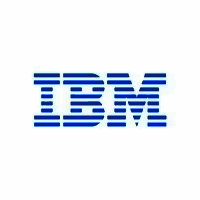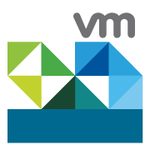Description

Awingu

Citrix Hypervisor
Comprehensive Overview: Awingu vs Citrix Hypervisor
Certainly! Let's break down both Awingu and Citrix Hypervisor, highlighting their primary functions, target markets, market presence, and differentiating factors.
Awingu:
a) Primary Functions and Target Markets:
- Primary Functions: Awingu is a unified workspace solution that provides secure access to legacy web and SaaS applications, shared files, and desktops in a single workspace. It operates entirely in the browser, enabling easy access without the need for complex software installations. Awingu emphasizes simplicity in deployment and use, offering capabilities such as multi-factor authentication, session recording, and auditing for enhanced security.
- Target Markets: Awingu is geared towards businesses of all sizes, particularly those looking for cost-effective, easily implemented solutions for remote access and digital workspaces. It appeals to sectors needing legacy application access without moving to complex VDI infrastructures, such as education, healthcare, legal, and government sectors.
b) Market Share and User Base:
- Awingu's market share is more segmented and smaller compared to established giants in the VDI and remote workspace market such as Citrix and VMware. It primarily serves small to medium-sized enterprises (SMEs) and specific enterprise needs focused on simplicity and cost-effectiveness. While it has a growing user base, it tends to serve niche requirements rather than broad enterprise deployments.
Citrix Hypervisor:
a) Primary Functions and Target Markets:
- Primary Functions: Citrix Hypervisor, formerly known as XenServer, is a virtualization platform optimized for desktop, server, and application virtualization. It provides robust virtualization management, disaster recovery, dynamic workload balancing, and more. It's widely used in environments requiring enterprise-grade virtualization capabilities, offering high availability, VM introspection for security, and integration with other Citrix and third-party products.
- Target Markets: Large enterprises, data centers, and organizations looking for a scalable, secure, and efficient virtualization solution. Citrix Hypervisor targets sectors that demand high performance, like finance, healthcare, technology, and educational institutions requiring sophisticated virtualization capabilities.
b) Market Share and User Base:
- Citrix Hypervisor holds a significant share of the enterprise virtualization market, though it faces strong competition from VMware vSphere and Microsoft Hyper-V. Citrix has a substantial user base across various industries, leveraging its integration with the broader Citrix Workspace ecosystem. It’s often chosen by enterprises already utilizing Citrix for other solutions.
Key Differentiating Factors:
-
Core Functionality: Awingu focuses on simplifying and unifying access to applications and desktops through a browser-based workspace. In contrast, Citrix Hypervisor provides foundational virtualization technology necessary to support large VDI deployments and complex IT infrastructure needs.
-
Deployment and Management: Awingu’s offering is cloud-centric and designed to be easy to deploy and manage, focusing on small to mid-size entities looking for quick solutions. Citrix Hypervisor, being a more traditional virtualization platform, is suited for on-premises data center environments where control over individual components is necessary.
-
Integration and Ecosystem: Citrix Hypervisor integrates deeply with other Citrix products, facilitating broader enterprise application delivery, security, and network needs. Awingu, while integrating with existing IT environments, does so at a simpler level, focusing on aiding remote work without extensive backend integration.
-
Cost and Complexity: Awingu is generally considered more cost-effective due to its simplified infrastructure requirements and lower management overhead, targeting budget-conscious organizations. Citrix Hypervisor can involve more complexity and cost, justified by its extensive features and capability to support large, complex systems.
In conclusion, while both Awingu and Citrix Hypervisor aim to enhance digital workspaces and virtualization, they cater to different needs and organization sizes, make-ups, and strategic IT directions.
Contact Info

Year founded :
Not Available
Not Available
Not Available
Not Available
Not Available

Year founded :
Not Available
Not Available
Not Available
Not Available
Not Available
Feature Similarity Breakdown: Awingu, Citrix Hypervisor
Certainly! Let's break down the feature similarities and differences between Awingu and Citrix Hypervisor.
a) Core Features in Common
-
Virtualization Support:
- Both Awingu and Citrix Hypervisor offer virtualization capabilities. Awingu provides a unified workspace that can be accessed from various devices, while Citrix Hypervisor (formerly known as XenServer) is a full-fledged virtualization platform.
-
Remote Access:
- Both solutions allow remote access to applications and desktops. Awingu is explicitly designed for this purpose, providing secure remote access to company resources. Citrix Hypervisor supports remote access through its integration with other Citrix products like Citrix Virtual Apps and Desktops.
-
Security:
- They both offer robust security features, such as encryption and multi-factor authentication, to ensure secure access to resources.
-
Scalability:
- Awingu and Citrix Hypervisor are scalable solutions, capable of supporting a growing number of users and computing resources in businesses.
b) User Interface Comparison
- Awingu:
- Awingu provides a web-based, simplified user interface. It's designed to be user-friendly, allowing users to access applications and desktops from a browser without needing a local client installation. The interface emphasizes ease of use and accessibility from various devices.
- Citrix Hypervisor:
- Citrix Hypervisor's interface is more technical and administrative-focused, generally accessed through Citrix's management tools like Citrix Studio or XenCenter. These interfaces offer detailed management capabilities, reflecting the needs of IT administrators managing virtual infrastructure.
c) Unique Features
Awingu:
-
Clientless Access:
- A unique selling point of Awingu is its clientless approach, allowing users to access applications via HTML5-compatible web browsers without needing additional software.
-
Unified Workspace:
- It integrates various applications, files, and desktops into a single online workspace, providing seamless access from anywhere.
-
Simplicity and Speed of Deployment:
- Designed for easy implementation, Awingu can be quickly deployed, making it suitable for businesses looking for rapid setup.
Citrix Hypervisor:
- Advanced Virtualization Capabilities:
- Citrix Hypervisor offers richer virtualization features, such as live migration of virtual machines, dynamic memory control, and comprehensive backup/restore capabilities.
- Integration with Citrix Ecosystem:
- It integrates deeply with other Citrix products, offering enhanced functionality for comprehensive virtual desktop infrastructure (VDI) solutions.
- Performance Optimization:
- Features like GPU virtualization, network optimization, and resource scheduling can significantly enhance performance in resource-intensive environments.
In summary, while both Awingu and Citrix Hypervisor provide core remote access and security features, they serve different purposes and audiences. Awingu excels in delivering a simple, clientless, unified access solution, ideal for non-IT-specialized deployments. In contrast, Citrix Hypervisor offers advanced virtualization features suitable for IT administrators and more complex enterprise environments.
Features

Not Available

Not Available
Best Fit Use Cases: Awingu, Citrix Hypervisor
Awingu
a) Best Fit Use Cases for Awingu
Awingu is a unified workspace solution that provides secure access to an organization's software and files from any device using a browser. Here are the types of businesses or projects for which Awingu might be the best choice:
-
Small to Medium-Sized Enterprises (SMEs): Awingu is particularly appealing to SMEs due to its ease of deployment and management without requiring significant IT overhead or on-premises infrastructure. It provides a cost-effective solution for organizations looking to implement BYOD (Bring Your Own Device) policies.
-
Remote Work Environments: Awingu is ideal for businesses looking to support remote work because it allows employees to access applications and data seamlessly from any location and device without the need for a VPN. This is particularly useful for companies with distributed teams or remote workers.
-
Education Sector: Educational institutions can use Awingu to provide students and staff with easy access to educational resources and applications from any device, enhancing digital learning experiences.
-
Legal and Financial Services: These sectors benefit from the high security, compliance, and auditability features of Awingu, which are crucial for handling sensitive client and financial data.
-
Temporary Projects: For projects requiring temporary or scalable IT solutions, Awingu offers a simple way to ramp up resources quickly without large infrastructural investments.
Citrix Hypervisor
b) Best Fit Use Cases for Citrix Hypervisor
Citrix Hypervisor (formerly XenServer) is a robust virtualization platform. Here are scenarios where it would be the preferred option:
-
Large Enterprises and Data Centers: Citrix Hypervisor is tailored for large-scale deployments and can manage extensive virtual environments efficiently, making it suitable for enterprises with extensive IT infrastructure.
-
High-Performance Workload Environments: Organizations that require high availability and performance for mission-critical applications—such as large databases and ERP systems—benefit greatly from Citrix Hypervisor's capabilities.
-
Cloud Service Providers: CSPs can leverage Citrix Hypervisor to deliver scalable cloud computing services and manage multi-tenant environments effectively.
-
Disaster Recovery and Business Continuity: Its robust virtualization features make it ideal for setting up disaster recovery sites to ensure business continuity.
-
Virtual Desktop Infrastructure (VDI): Companies looking to deploy or manage VDI environments can use Citrix Hypervisor to enable smooth and efficient operations.
Industry Verticals and Company Sizes
d) Catering to Different Industry Verticals and Company Sizes
Awingu:
- Verticals: Education, legal, healthcare, and finance, where secure remote access to applications and files is critical.
- Company Sizes: Primarily SMEs or departments within larger enterprises needing a simple, all-in-one workspace solution.
Citrix Hypervisor:
- Verticals: Healthcare, financial services, manufacturing, and IT service providers, where robust performance and management of virtual environments are necessary.
- Company Sizes: Large enterprises and medium to large-sized companies with complex virtualization needs.
In essence, Awingu is typically favored for its simplicity, cost-effectiveness, and ease of remote access, making it a great choice for SMEs and industries with high security needs. On the other hand, Citrix Hypervisor excels in handling large-scale, performance-intensive environments, making it suitable for bigger enterprises and industries with complex IT and infrastructure requirements.
Pricing

Pricing Not Available

Pricing Not Available
Metrics History
Metrics History
Comparing undefined across companies
Conclusion & Final Verdict: Awingu vs Citrix Hypervisor
Conclusion and Final Verdict: Awingu vs. Citrix Hypervisor
When evaluating Awingu and Citrix Hypervisor, it's essential to consider the specific needs of your organization, such as the use case, existing infrastructure, budget constraints, and technical expertise. Both products have unique offerings and can deliver significant benefits depending on the scenario.
a) Best Overall Value
Citrix Hypervisor offers the best overall value for organizations focused on comprehensive virtualization solutions with a need for high performance, flexibility, and robust management features. It is particularly beneficial for businesses with complex IT infrastructures requiring extensive virtualization capabilities.
Awingu provides significant value for organizations seeking a simple, cost-effective solution to enable remote access and facilitate BYOD (Bring Your Own Device) policies. Its browser-based approach and ease of use make it particularly appealing for small to medium-sized businesses or those looking for hassle-free deployment.
b) Pros and Cons
Awingu:
-
Pros:
- Simplicity and Ease of Use: Awingu's web-based platform is easy to deploy and manage, requiring minimal technical expertise.
- Cost-Effective: Offers a straightforward licensing model and reduces hardware maintenance by enabling remote access through existing infrastructure.
- Security: Provides secure access with support for multi-factor authentication and SSL encryption.
- Compatibility: Works across various devices and operating systems with a browser, making it versatile for remote work environments.
-
Cons:
- Limited Virtualization Features: Lacks the advanced virtualization features and scalability that Citrix Hypervisor offers.
- Performance Constraints: May not handle heavy workloads or complex virtual environments as effectively as dedicated hypervisors.
Citrix Hypervisor:
-
Pros:
- Comprehensive Virtualization: Offers robust virtualization capabilities, including support for Windows and Linux virtual machines, live migration, and resource pooling.
- Scalability: Highly scalable, making it suitable for large enterprises with expansive IT needs.
- Advanced Features: Includes features like GPU virtualization, high availability, and disaster recovery options.
- Integration: Integrates well with other Citrix products, enhancing the overall ecosystem for organizations already using Citrix solutions.
-
Cons:
- Complexity: More complex to set up and manage, requiring a higher level of technical expertise.
- Cost: Potentially higher total cost of ownership due to licensing fees and the need for specialized IT staff.
- Resource Intensive: May require more robust hardware and infrastructure to function optimally.
c) Specific Recommendations
-
For Organizations Prioritizing Simple Deployment and Remote Access: If your organization needs a straightforward solution for remote access without the complexity of managing extensive virtualization, Awingu is an excellent choice.
-
For Large Enterprises with Extensive Virtualization Needs: Citrix Hypervisor is recommended for businesses that need advanced virtualization capabilities and are equipped to handle the additional complexity and cost.
-
Consider Hybrid Solutions: For businesses that require both robust virtualization and easy remote access, considering a hybrid approach that utilizes both Awingu for its ease of access and Citrix Hypervisor for its virtualization strength might be beneficial.
Ultimately, the choice between Awingu and Citrix Hypervisor will depend on a careful assessment of your organizational needs, priorities, and resources. Analyze current and prospective IT demands, potential growth, and budget to make an informed decision.
Add to compare
Add similar companies




